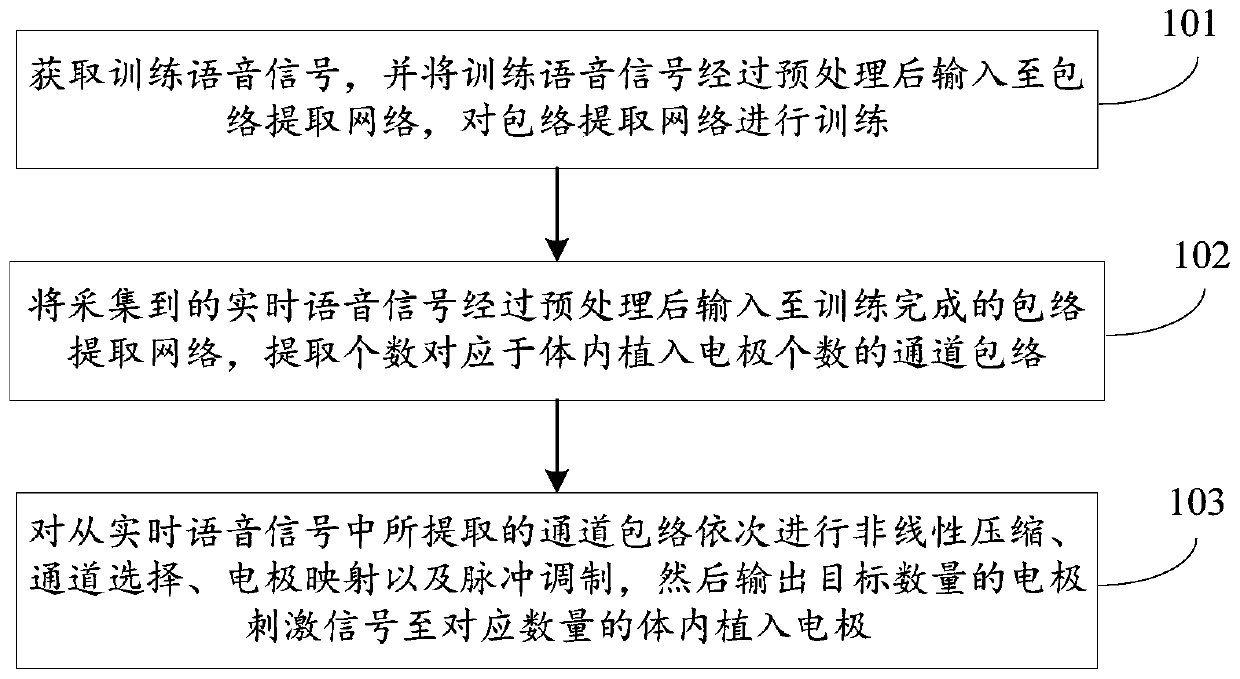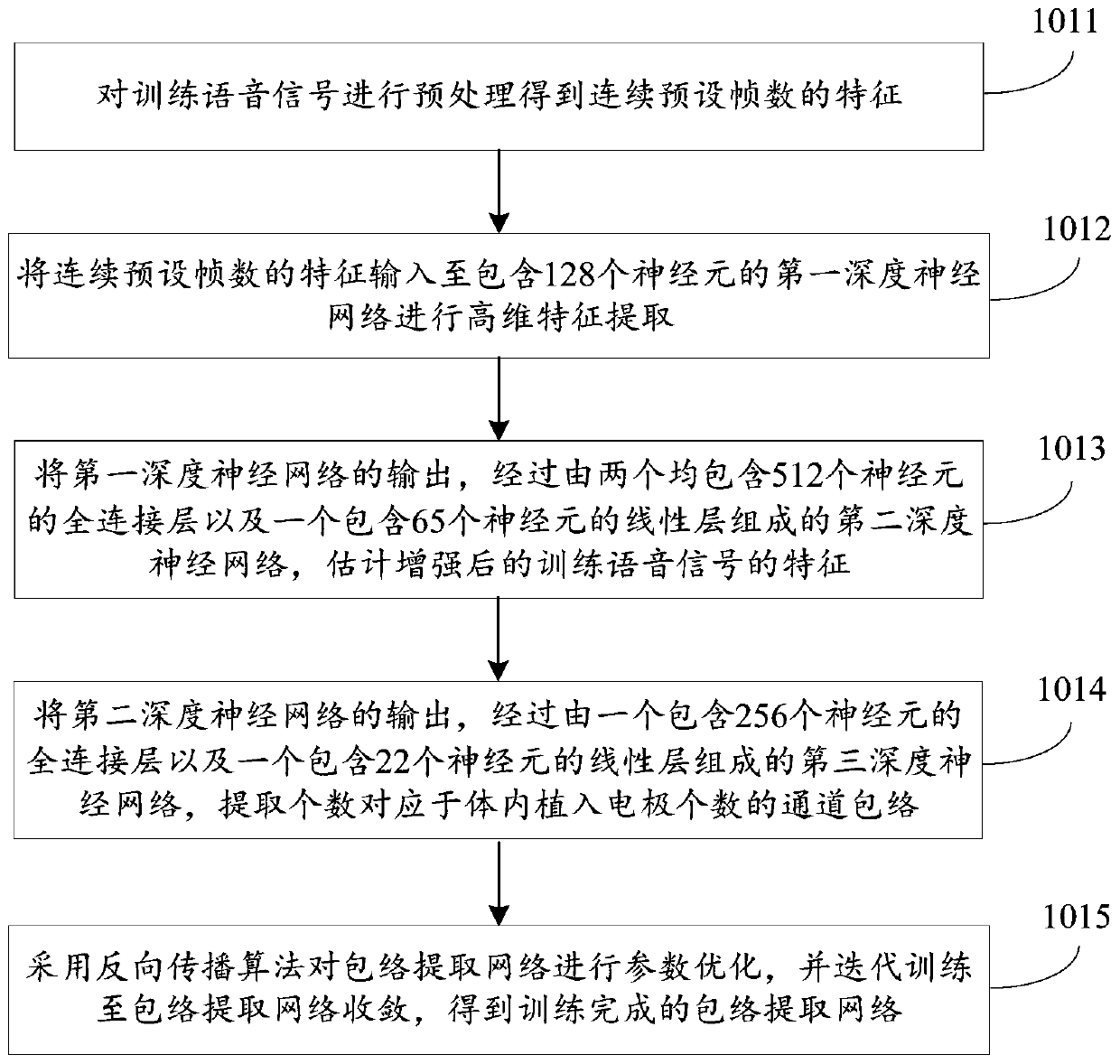Artificial cochlea signal processing method and device thereof and computer readable storage medium
A signal processing device and cochlear implant technology, applied in the field of signal processing, can solve the problems of inability to adapt well, limited noise reduction processing effect, and high power consumption
- Summary
- Abstract
- Description
- Claims
- Application Information
AI Technical Summary
Problems solved by technology
Method used
Image
Examples
no. 1 example
[0027] In order to solve the technical problems of low processing efficiency, high power consumption, and relatively limited noise reduction processing effect of the noise reduction algorithm adopted in the related art, as well as the technical problems that it cannot be well adapted to the CI processing strategy, this embodiment proposes a cochlear implant Signal processing methods, applied to cochlear implants such as figure 1 Shown is a schematic flow chart of the cochlear implant signal processing method provided in this embodiment. The cochlear implant signal processing method proposed in this embodiment includes the following steps:
[0028] Step 101. Obtain a training speech signal, and input the training speech signal to an envelope extraction network after preprocessing, and train the envelope extraction network.
[0029] Specifically, the envelope extraction network in this embodiment includes a first deep neural network (DNN1), a second deep neural network (DNN2) an...
no. 2 example
[0056] In order to solve the technical problems of low processing efficiency, high power consumption, limited noise reduction processing effect, and inability to be well adapted to CI processing strategies of the noise reduction algorithm adopted in the related art, this embodiment shows a cochlear implant Signal processing device, applied to cochlear implants, for details, please refer to Figure 4 , the cochlear implant signal processing device of this embodiment includes:
[0057] The training module 401 is used to obtain the training voice signal, and input the training voice signal to the envelope extraction network after preprocessing, and train the envelope extraction network; wherein, the envelope extraction network includes the first deep neural network connected sequentially. network, the second deep neural network and the third deep neural network, the first deep neural network is used to extract high-dimensional features from the input features, the second deep neu...
no. 3 example
[0068] This embodiment provides a cochlear implant, see Figure 5 As shown, it includes a processor 501, a memory 502 and a communication bus 503, wherein: the communication bus 503 is used to realize connection and communication between the processor 501 and the memory 502; the processor 501 is used to execute one or more programs stored in the memory 502 A computer program to realize at least one step in the cochlear implant signal processing method in the first embodiment above.
[0069] The present embodiment also provides a computer-readable storage medium, which includes information implemented in any method or technology for storing information, such as computer-readable instructions, data structures, computer program modules, or other data. volatile or nonvolatile, removable or non-removable media. Computer-readable storage media include but are not limited to RAM (Random Access Memory, random access memory), ROM (Read-Only Memory, read-only memory), EEPROM (Electrica...
PUM
 Login to View More
Login to View More Abstract
Description
Claims
Application Information
 Login to View More
Login to View More - R&D
- Intellectual Property
- Life Sciences
- Materials
- Tech Scout
- Unparalleled Data Quality
- Higher Quality Content
- 60% Fewer Hallucinations
Browse by: Latest US Patents, China's latest patents, Technical Efficacy Thesaurus, Application Domain, Technology Topic, Popular Technical Reports.
© 2025 PatSnap. All rights reserved.Legal|Privacy policy|Modern Slavery Act Transparency Statement|Sitemap|About US| Contact US: help@patsnap.com



